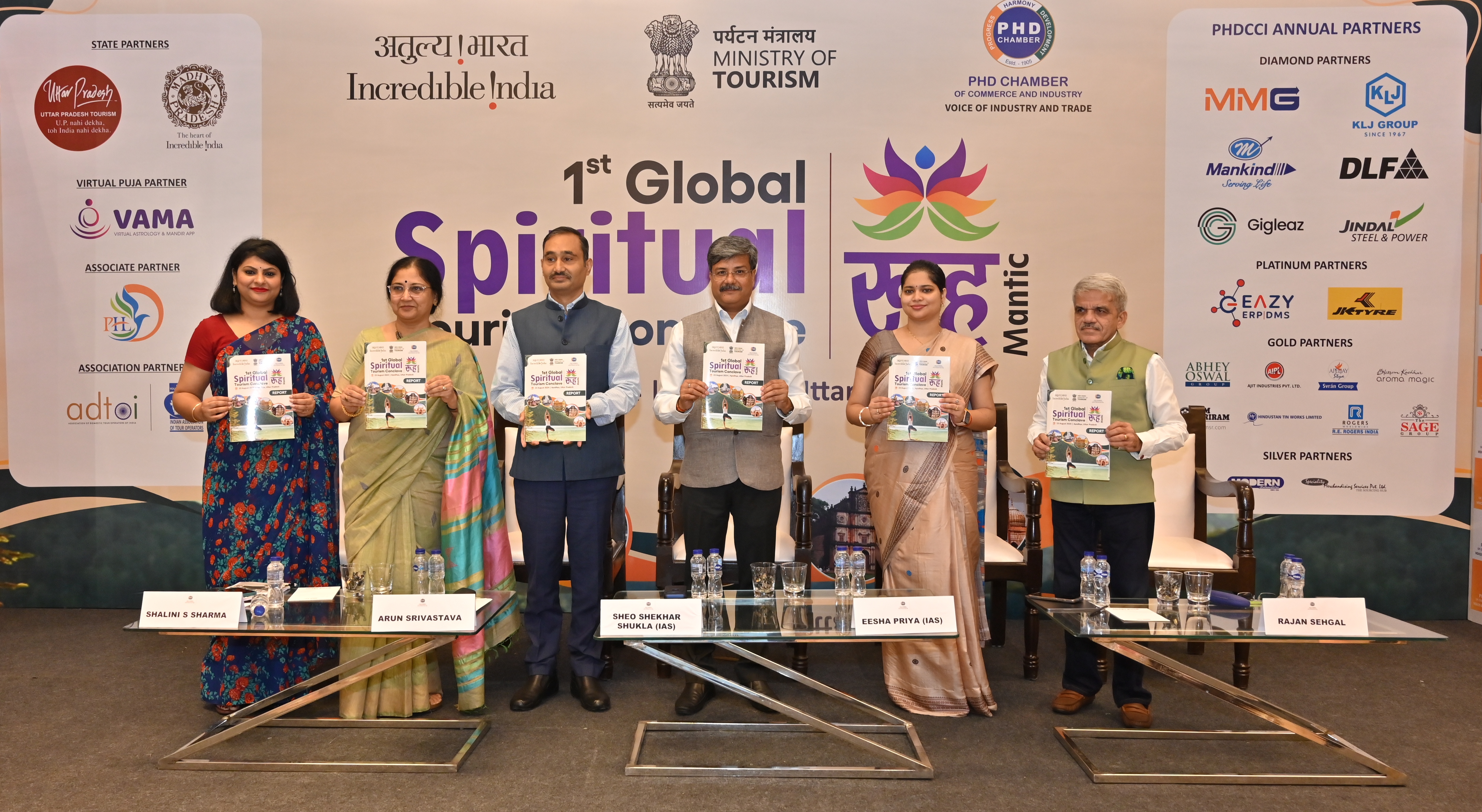Pilgrimage and spiritual tourism are rapidly expanding within the global tourism sector, reflecting a growing interest in cultural, spiritual, and faith-based travel. India, with over 450,000 religious and cultural heritage sites, offers a wealth of pilgrimage and spiritual landmarks. KPMG in India and PHDCCI have released a report titled “Sacred Journeys: Unfolding the Evolution and Growth of Pilgrimage and Spiritual Tourism in India” at PHDCCI’s 1st Global Spiritual Tourism Conclave, which explores the key drivers behind this type of tourism, its economic impact, and the challenges and opportunities it presents for various destinations.
As spiritual tourism in India is poised for significant growth, understanding the diverse motivations of pilgrims and providing tailored solutions is crucial. Recognising the associated risks and sensitivities is equally important to ensure that tourism fosters respectful, sustainable, and mutually beneficial interactions between visitors and host communities. The report highlights that, post-pandemic, spiritual tourism has become increasingly central, with a noticeable rise in travellers and economic activity both globally and within India. The evolution of religious tourism now caters to modern travellers seeking more meaningful, responsible, and transformative experiences.
The influence of digital technology on religious tourism is evident, with modern trends reflecting a blend of tradition and contemporary practices. Increased digital exposure and positive reviews from travel bloggers have contributed to the surge in religious tourism in India. Virtual pilgrimages, which gained popularity during the COVID-19 pandemic, have continued to impact travel preferences, with many pilgrims now integrating their spiritual journeys with medical treatments or wellness retreats. Improved connectivity and supporting infrastructure have facilitated easier travel, making it simpler for visitors to reach their destinations.
Identifying different categories of pilgrims and addressing their unique needs is essential for enhancing the pilgrimage experience and managing resources effectively. Pilgrimage tourism can be broadly categorised into explorers, solo travellers, and mass-organised pilgrims. Solutions to address these needs include the holistic development of religious sites by combining them with adventure and wellness tourism, increasing the visibility of lesser-known sites through research, preservation, and local community involvement, and implementing educational programs to attract tourists interested in cultural enrichment.
Vivek Agarwal, KPMG emphasised the need for a comprehensive, holistic, and sustainable approach to the development of pilgrimage sites to enrich spiritual experiences and preserve these destinations. Aalap Bansal noted that while digital tools and social media have broadened the reach of spiritual practices, challenges such as over-tourism and infrastructure strain must be addressed through sustainable practices and diversified tourism offerings. Overall, pilgrimage and spiritual tourism offer substantial opportunities for economic growth and cultural exchange, provided that development is managed in a way that safeguards cultural and religious heritage for future generations.






